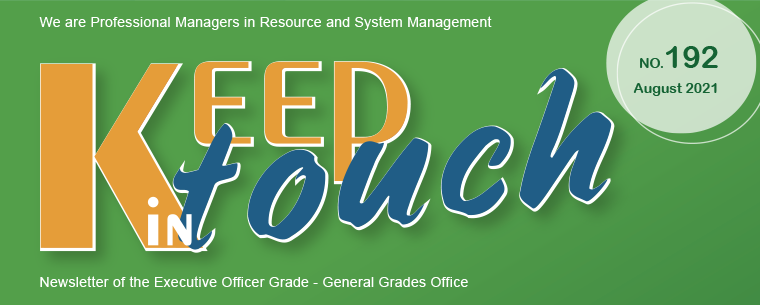|
How to prepare for the rollout of ERKS by the end of 2025? Any tips from those bureaux/departments (B/Ds) that have already adopted ERKS?
If you have these questions in mind, don’t worry. EO colleagues from the Government Records Service (GRS) are here to share with us B/Ds’ experience in the ERKS pilot programme and some points to note regarding ERKS implementation.
Good Practices and Lessons Learnt from Pilot Programme
11 B/Ds have fully/partially implemented ERKS. They include Communications and Creative Industries Branch of Commerce and Economic Development Bureau, Drainage Services Department, Efficiency Office (EffO), GRS, Marine Department, Rating and Valuation Department, etc. Let’s share their good practices and experiences!
Formulate a dedicated project team
As a first step, the pilot B/Ds established their own multi-disciplinary project teams comprising both records management (RM) and IT staff. RM staff handle the RM issues such as review of records classification scheme (RCS), viz. file plan and development of ERKS procedures and guidelines. IT staff are responsible for the relevant technical issues. Such composition enables the team to implement an ERKS that meets the genuine operational needs of the B/Ds.
Start early review of RCS
Reviewing and refining departmental RCS and defining user roles/profiles and access control are essential but time-consuming preparation work for ERKS implementation. Based on experience, a small/medium-sized B/D may take about one year to complete the two tasks while a large-sized B/D may take two to three years. B/Ds should make an early start on the tasks.
It is important to invite all key stakeholders to deliberate their views during the review exercise as it would be difficult to make significant revision to the RCS, in particular its design structure, once it has been adopted. Extra time would also be required for making revisions.
Develop practices and guidelines
Clear and comprehensive RM practices and guidelines could help users better understand the new practices and avoid confusion. They set out details on the roles and responsibilities, record capturing rules, scanning principles, etc. in an ERKS environment, such as who should capture an e-mail record with multiple addressees, how to name a record, etc.
Review business processes
To enhance operational efficiency, B/Ds should analyse business processes with a view to incorporating RM processes into business operations. In particular, electronic means of communication and workflow digitalisation could be widely adopted. One pilot B/D implemented a workflow function in ERKS to support the clearance of routine/administrative matters such as contract award. This streamlined the business processes by eliminating manual efforts in record capturing to ERKS.
|

